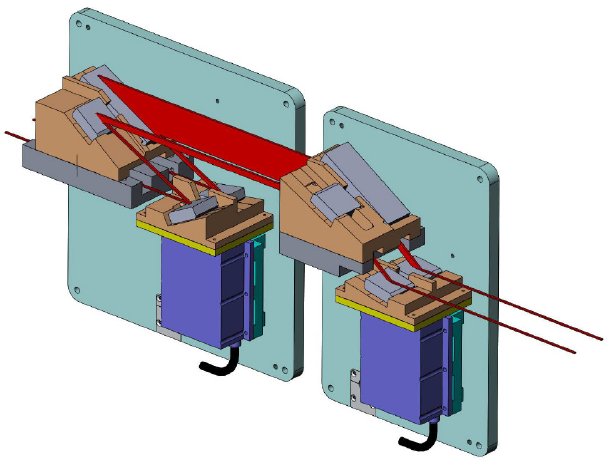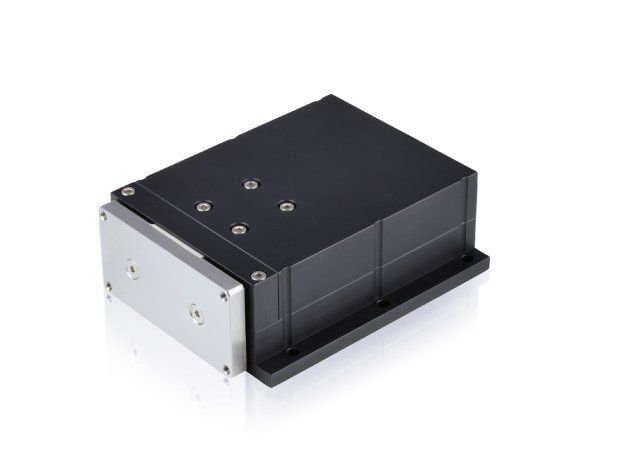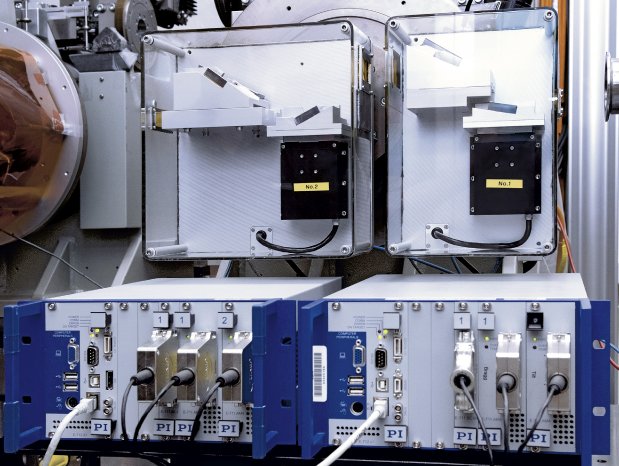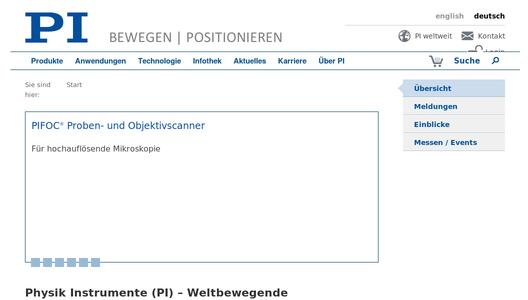They shift and position the crystals of a double monochromator for inelastic X-ray scattering and enable setting of the Bragg angle as well as the tilt angle of the crystal with a resolution of only 0.1 µrad and a repeatability of <0.1 µrad over a range of 12 µrad.
The High Demands made by X-ray Spectroscopy
The double-crystal monochromator is used to examine phonon excitation in solids. Two monochromators select the desired wavelengths with an energy resolution of 0.5 meV or 2 meV.
Each of the monochromators consists of four independent crystals arranged in pairs. The first pair of crystals collimates the beam, while the second pair selects the required energy. The full width at half maximum of the respective rocking curves is only a few microradians. To operate in the curve's maximum, i.e., at maximum intensity, the relative angle of the crystals to each other must therefore be set to a resolution of 0.5 µrad or better in both pairs.
Also, during a test series, scientists often need fast characterization of their samples with a resolution of 2 meV and a higher intensity in order to be able to specifically select samples for more detailed measuring at a very high energy resolution of 0.5 meV. This requires fast exchange of the monochromators with precise readjustment of the Bragg angle and the tilt angle of all four crystals.
Piezo-based Stepping Drives for Positioning
To adjust the Bragg angle and the tilt angle of the crystals, they must be moved and positioned with high precision. Excellent long-term stability and very good repeatability are also required, whereby only very limited space is available for the positioning systems.
The drive principle of piezo-based stepping drives and the matching motion controller actually surpass the resolution and repeatability required. In conjunction with the capacitive position sensors used, they achieve a long-term repeatability of well under 0.1 µrad while the footprint of the stage of 95 mm × 78 mm × 32 mm remains extremely compact.
Further development of the monochromator will allow the entire travel range of ±2 mrad to be used to synchronize the motion of the crystals for selecting the energy range of the X-ray beam from the spectrometer.




